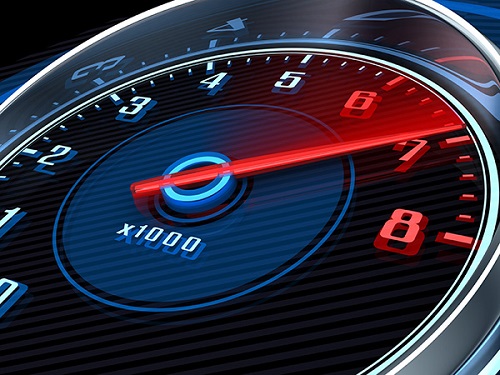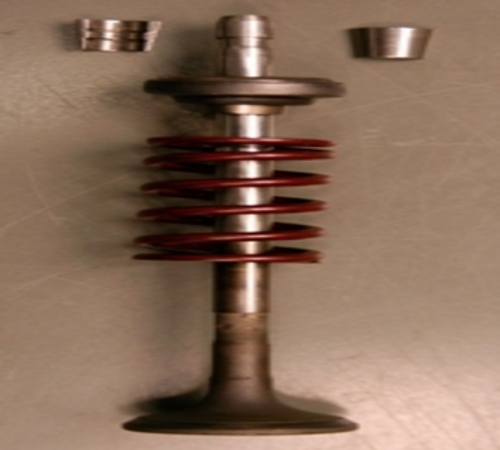You might have heard redline in context to the car or something else but in all cases, it means the same thing which is reaching the peak of something. Let’s take a look at what redlining is in terms of cars and is it safe to do it?
Popular Read: How a Cheap Used Car can be a Trap | Buyers Beware!
Engine Redlining

The term redline is said to come from the fact that you are reaching the red lines on a tachometer (RPM counter), hence the name. It is the maximum engine speed you can achieve that will not harm the car. Redlines are developed in such a way that operating at them will not harm the engine and they are at a level which will not be reached without trying to redline. This means that redlines are at a level that one won’t reach them while driving normally thus making it easier for casual drivers as they don’t have to worry about accidentally reaching peak performance.
What Determines Engine Redline?
There are a lot of variables when deciding an engine redline. These include but are not limited to the physical capacity of the components, type of fuel used and the biggest of them all the how long it takes till the valve floats.
Download The GoMechanic App Now!

Physical Capacity Of The Components
This one is a no brainer as stronger and sturdier components allows for an increase in redline. Weaker components used will limit the redline RPM as the engine will not be able to sustain loads at high RPMs or even reach those RPMs.
Type Of Fuel
Due to how engines are made for diesel and petrol, petrol gets higher redline RPM compared to diesel. Petrol engines usually redline at 7000-8000 RPM while diesel hits the peak at around 4500 RPM. This is because diesel engines are not made for high RPM in the first place. They are slow to combust than petrol and are mainly focused on more torque rather than RPM. Diesel engines need to combust with the pressure alone and don’t use a spark plug which makes them slower compared to a petrol engine. This causes diesel engines to have a low overall RPM and thus they get lower engine redline RPM as well.
Valve Float

One of the worst things that could happen to an engine, valve float usually happens at really high speeds. Poppet Valves are a part of an IC engine and their job is to moderate fuel and exhaust intake and outtake. They are located on top of the piston. A valve float means that these poppet valves stop closing. This results in low performance reduced efficiency and in worst-case scenarios piston blowing out of the engine.
Now that we have seen what limits the redline let’s find out if it’s safe to redline an engine.
Is Redlining Safe To Do?
Yes, it is. Should you do it all the time? No. Engines are designed in such a way that they can perform at redline without breaking down or taking damage at those RPMs. This doesn’t mean that you should redline your engine often. Working at peak performance be it an engine or anything else will take its toll and cause wear and tear.
Newer cars also come with rev limiters that cut fuel supply if the engine is working at redline or above for too long. This ensures that people don’t accidentally harm their engines by downshifting at high speed and making the engine go redline.
Similar Read: Engine Failure: 10 Warning Signs You Must NEVER Ignore
The petrolheads among you might be familiar with the term ‘Italian tune-up’ which is said to clean the carbon deposit of your engine by redlining. Let stake a look at if it works and if its worth to redline your engine.
The Italian Tune-Up
A redline a day keeps the carbon at bay. A common saying among the redline enthusiast, it is not entirely false. Redline does help with carbon deposit but it’s highly situational and depends a lot on how much hotter the engine components can get. Multiple studies have found out that more load on a car means more carbon deposit however more load also equals higher temperature which results in the cleaning of said deposit. This makes the Italian tune-up more of a maybe rather than a guaranteed clean up of carbon deposit. Does it make redlining worth doing? Again a no as the risk is more than the reward and it doesn’t make sense to do it.
Redlining might not be worth doing seeing all the problems it can cause a minimal reward but it does sound cool to do it and there is no harm redlining your engine once a while.







So I suppose this “mechanic writer” has never heard of a spun bearing due to redlining. Main and rod bearings have just a few thousands of an inch space between them and the crankshaft. As these bearings wear, they throw out more oil during normal operation. When the engine speed reaches a point that the oil pump cannot push oil through the crankshaft as fast as it is being slung out then the bearing runs dry. That generates heat and friction which can make the bearing stick to the crankshaft. The small tabs on the bearings cannot hold the bearing in place and the bearing rotates. That shuts off the oil supply hole from the crankshaft and a few thousand RPMs later (milliseconds) a rod cap will break and the crankshaft hits the dangling rod and push it through the block. It happens on funny cars and dragsters when the engine overrevs and costs 10s of thousands of dollars but on a car only a few thousand dollars to change the engine. So no matter what a mechanic or anyone else says, anytime an engine is redlined the engine is in danger and you are taking a chance on paying dearly. My advice is never do it intentionally, especially on an older engine. That older engine will also have a worn oil pump which also limits the pressure and flow. Racing engines have special pumps to help with the high rpm oil starvation issue, production engines do not..
So what’s the purpose of manufacturers showing what’s after redline, like 7k-9k rpm, why they don’t just cut it at 7k rpm, so no matter how crazy a driver be, he won’t be able to rev beyond 7k rpm or showing 9k rpm max is saying that it is still safe to rev till
9k rpm if restrictions has been lifted? My Ducati S1000Sport and ST2 does not has redline but my max rev is 9k rpm, I scare.